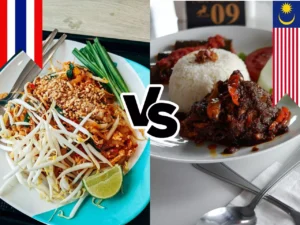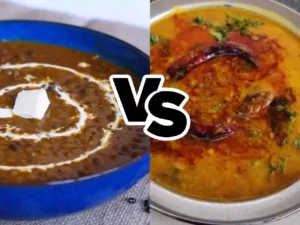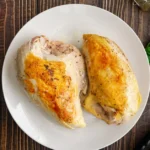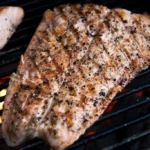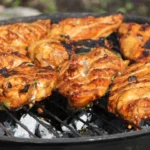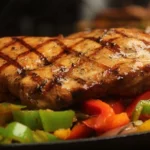When exploring tasty Mexican, and Carrabian street foods, three enticing street foods tripas, chitlins, and buche might confuse you. It’s because these offal meats have been a staple food for many cultures, and therefore they seem similar at first.
Yet, despite sharing similarities in origin, tripas, buche, and chitlins are unique in their preparation, taste, and cultural significance.
In today’s blog post, you’ll learn about the key differences between buche, tripas, and chitlins. It’ll help you understand these unique dishes better.
What’re Tripas, Their Preparation, Taste, and Texture?
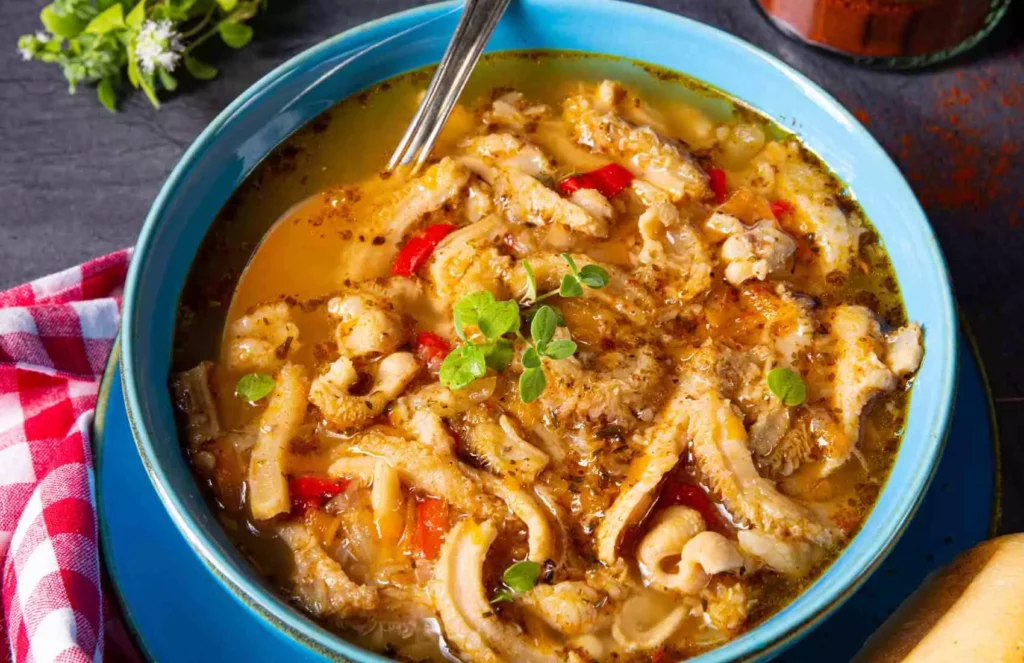
Tripas, also known as “tripe,” is a type of food made from the edible lining of the small intestine of various animals, commonly cattle or sheep.
This dish has its origins in various cultures worldwide. Therefore, it’s equally popular in Latin American, Spanish, and Portuguese cuisines.
The preparation of tripas involves a thorough cleaning process to remove any impurities. It’s followed by an extended period of cooking to achieve tenderness. This can be done through boiling, braising, or frying, depending on the regional culinary practices.
When cooked, the taste of tripas is mild and slightly sweet, with a bit of a chewy texture. Some people find the taste of tripas to be off-putting, but others enjoy it. The seasoning and cooking methods play a significant role in the final taste of the dish.
What’re Chitlins, their Preparation, Taste, and Texture?
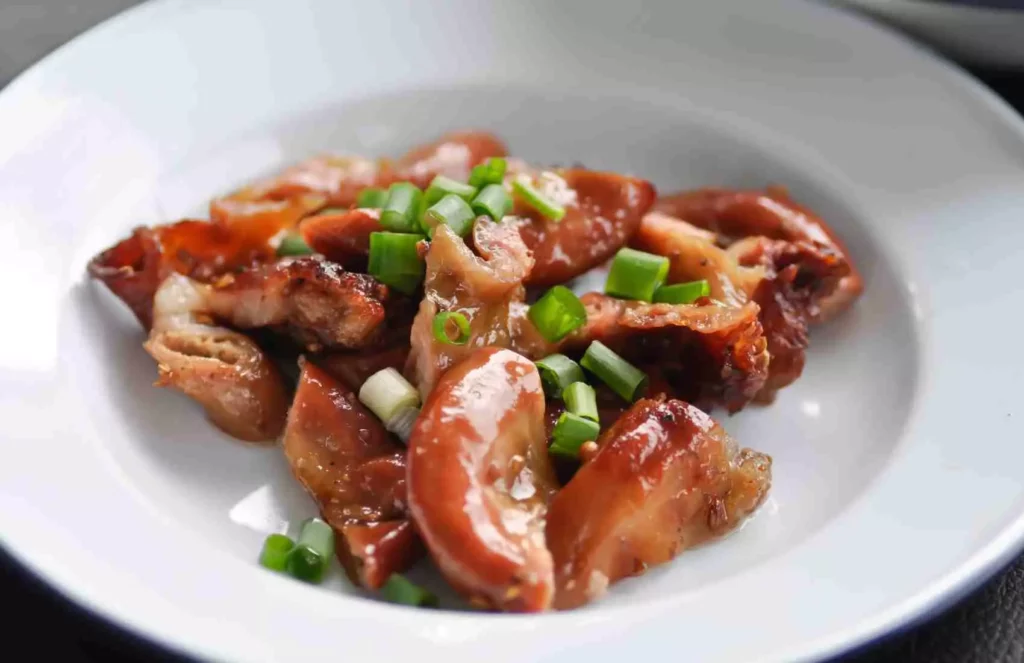
Chitlins, short for “chitterlings,” is a dish made from the small intestines of pigs. Like tripas, which originated in Africa, chitlins are popular in various cultures. And among these, Southern American cuisine is also notable.
Preparing chitlins requires a thorough cleaning of the pig intestines to remove any remaining waste products. (Yet you can get them cleaned and packaged at any store). The cleaned chitterlings are boiled or simmered to achieve tenderness. Because of their small size, they’re cooked whole.
Chitlins have a tender, yet slightly chewy texture after cooking.
Besides this, their flavor is mild and somewhat earthy. Some people compare the taste to that of the liver or kidneys. Therefore, seasoning is crucial to enhance their taste, and they are often prepared with spices or served with sauces.
What is Buche, it’s Preparation, Taste, and Texture?
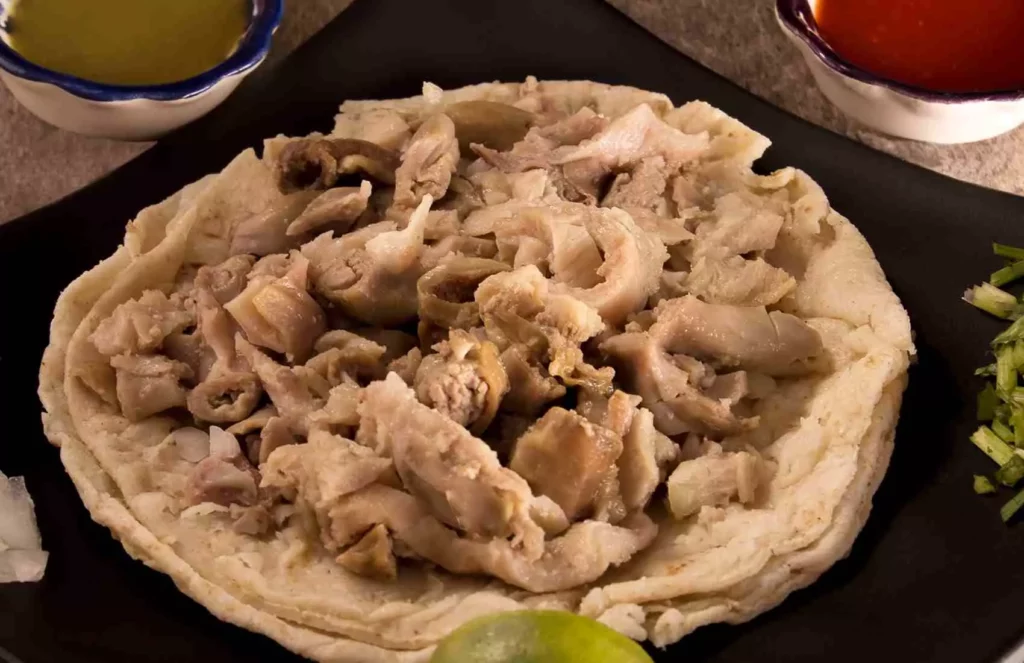
Mexican “buche” refers to a specific type of meat used in traditional Mexican cuisine. It is not the same as the French dessert “bûche de Noël.” The first recorded use of the word “buche” in English was in 1820.
In Mexico, “buche” is made from the stomach of a pig or sometimes from other animals like cows or sheep.
To prepare the buche, first, the stomach is cleaned, which requires some time. Then it’s cooked. And lastly, served as chopped or shredded to be used as a filling for various dishes.
The texture of the buche is quite unique. When raw, it has a rubbery or velvety texture. It is a bit spongy compared to beef tripe. However, after cooking, the texture changes significantly.
It becomes slightly chewy and more tender. However, if it is cooked for the perfect amount of time, it will be tender and flavorful. The texture of buche is often described as being similar to that of firm tofu.
The taste of buche is also quite unique. When it’s cooked, it has a mild, slightly sweet flavor– not as strong as other offal meats, such as liver or kidneys.
One of the most common ways to enjoy buche in Mexican cuisine is in tacos. The cooked and seasoned buche is often served in corn tortillas with various toppings like salsa, onions, cilantro, and lime.
You can enjoy this regional delicacy, and it can be found at street food stalls, taquerías, and restaurants in areas with a strong Mexican culinary influence.
To Summarize
- Tripas are the small intestines of farm animals that have been cleaned, boiled, and grilled. They are a popular ingredient in Mexican cuisine and are often used as a filling for tacos.
- Chitterlings or chitlins are the small intestines of pigs that have been cleaned, boiled, and fried. They are a popular dish in Southern American cuisine.
- Buche is the stomach of a pig that has been cleaned, boiled, and grilled. It is a popular dish in Caribbean cuisine, often served with onions, peppers, and spices.
In conclusion, all three dishes, buche, tripas, and chitlins, are unique dishes with a long history in various cultural cuisines. After exploring the differences between these three, now you can appreciate their tasteful existence in traditional cuisines.
